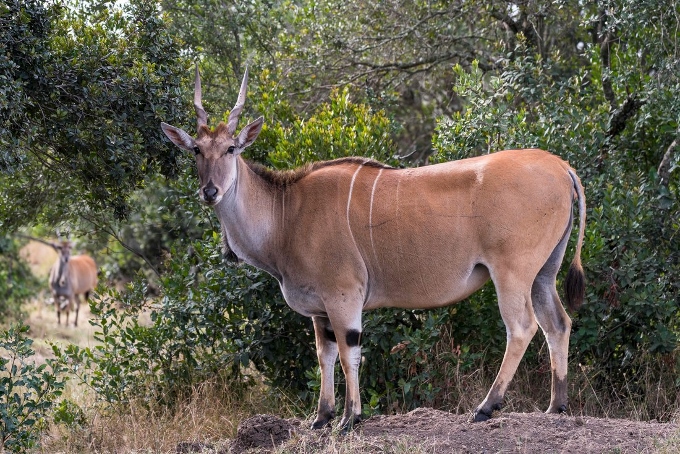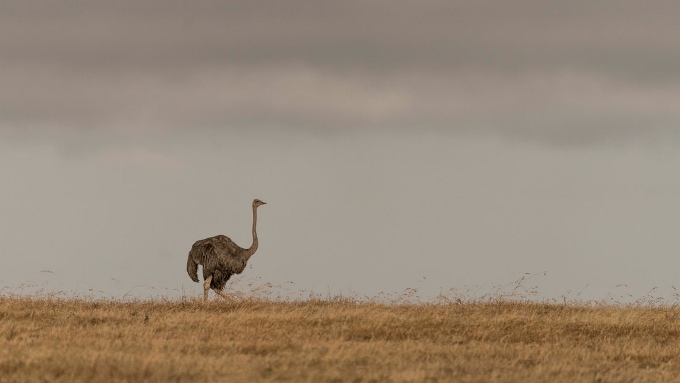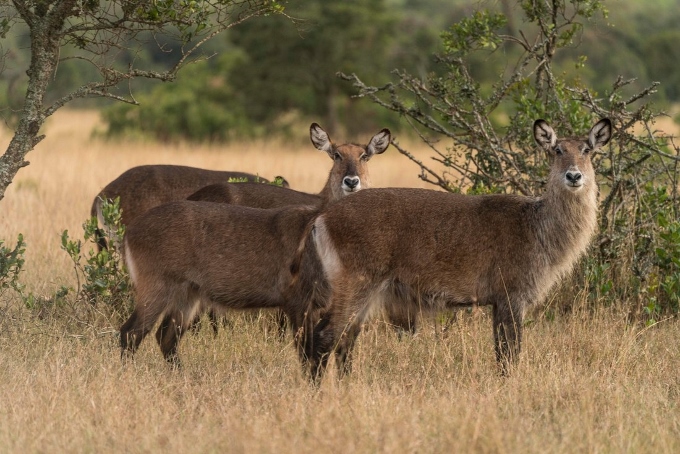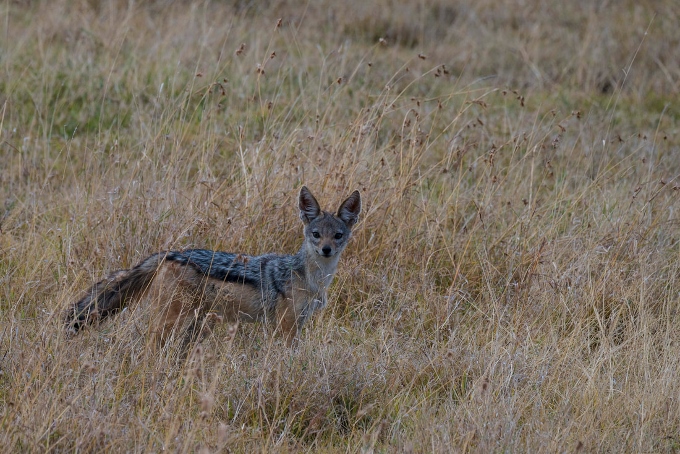Porini Rhino Camp guest Clinton Richardson describes the wealth of wildlife that he experiences – by day and by night – in Kenya’s Ol Pejeta Conservancy …
* * * * * * * * * * * * * * * * * * * * * * * *
This series of blogs will take you on Clinton’s safari in Kenya as he travels from Atlanta (USA) to Nairobi National Park, Selenkay Conservancy (Amboseli), Ol Pejeta Conservancy (Laikipia) and Olare Motorogi Conservancy (Maasai Mara). Let’s join him on his journey as he shares his insights into the conservancies, Porini Camps and the people (and animals!) that he meets along the way. All images are from Clinton’s TrekPic.com photo site. Blog entries are from his Venture Moola blog at ReadJanus.com.
* * * * * * * * * * * * * * * * * * * * * * * *
Our first night at the Rhino Camp in Ol Pejeta was like our nights at the other camps. The tent was similar and located a short walk from the dining tent. And, we were escorted to our tent and zipped in after dinner by one of our Maasai hosts.
What distinguished it, however, were the chewing sounds and grunts that woke me up in the middle of the night. They were coming from directly behind the bed. Outside the tent, mind you, but close enough to be able to tell that horns of some sort pushed against the tent wall.
Surprisingly, I did not feel any concern. We were zipped in after all. But in the morning we discovered just how big our visitor was when we found a steaming buffalo paddy next to the walk way between our tent and the dining tent.

At the Waterhole
A waterhole across a small stream from our tent also reinforced how close we were to the wildlife. During our short stay we saw elephants, gazelles, baboons, rhino and monkeys there. The steep banks of the stream provided a natural barrier providing us with an idyllic setting to watch the African parade of life.

Black Rhino in Hiding
Our ride out each morning took us through a tree filled area up a hill where we reached an open plain. The first morning out we spotted a mature male lion in the acacia trees by the side of the road. Our driver tried to follow but could not get through the thick and spike-filled trees.
The second morning out we spotted this fellow, a black rhino, peering through the trees. Like the lion, he was just a few hundred yards from the camp entrance.

White Rhino and Oxpecker
You would expect the rhino to be plentiful near a Rhino Camp and they were. This white rhino on the plain near camp is a good example. The bird on his back is an oxpecker. They groom rhino, giraffes and other animals. The ones in the grass with the iridescent coloring are local starlings.

Lioness in the Grass
As we shared in an earlier post, the lions are at Ol Pejeta as well. Everyone gets excited by the lions – the drivers, the spotters, and the camp staff. They are not just the focus of the camp but like the other big cats – Leopards and Cheetah – they are all given names, a distinction reserved to the big cats the majestic elephant.

Eland
But other species we saw were just as interesting in their own way. Take the eland, Africa’s largest antelope. The adult male stands about five feet at its shoulder. Despite their size, they are agile enough to clear a four foot fence from a standstill.

Ostrich on the Plain
Or the ostrich, the seven to nine foot tall flightless bird that can sprint up to 43 miles per hour and run at 31 miles per hour for extended distances. Ostrich kicks can kill a lion or a man with its kick.

Waterbuck
The waterbuck, whose furry neck makes it a less favored choice among lions and other predators is abundant here as well. As their name suggests, they are rarely far from water.

Zebra Heavy with Child
Our other neighbors at Ol Pejeta included the zebra, abundant and pregnant, gazelles, warthogs, hyena and jackals.

Young Jackal in the Grass
First published 27 Dec 2018. All photos and text are © Clinton Richardson. All images are from his galleries at TrekPic.com
About Clinton Richardson
Clinton Richardson has been writing and taking photographs for decades. His books include the critically acclaimed 5th edition Richardson’s Growth Company Guide 5.0 and the award-winning book about social media and ancient coins called Ancient Selfies. His images, including images taken on his trip, can be viewed at TrekPic.com. His Venture Moola blog can be viewed at Readjanus.com.
See Other Blogs in this Series:
- Safari Countdown: Prepping for Kenya
- Safari 1: The Hunt
- Safari 2: Off to Nairobi
- Safari 3: Tented Camps & Conservancies
- Safari 4: Passports in His Underpants
- Safari 5: Night Lions to Amboseli
- Safari 6: Amboseli to Selenkay
- Safari 7: Pooh on You
- Safari 8: Eaten by a Lion?
- Safari 9: The Maasai
- Safari 10: On the Move
- Safari 11: Crash on the Grass
- Safari 12: Sundowner Surprise
- Safari 13: Stalag Panzee
- Safari 15: Dry Season Showers
- Safari 16: How Many Wives Would You Like to Have?
- Safari 17: Distracting His Highness
- Safari 18: How to Eat a Tree
- Safari 19: Hunting with Children (well, cubs!)
- Safari 20: Blue Jean Symphony
- Safari 21: African Nights

